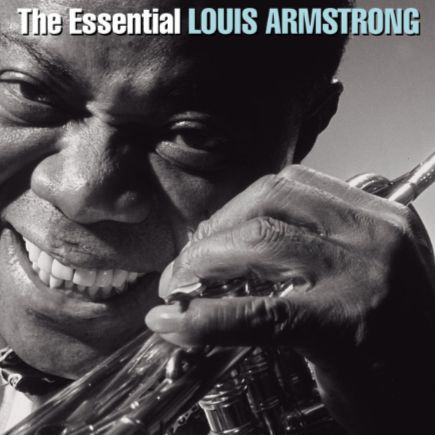Ain’t Misbehavin’: Fats Waller, Harlem et l’affirmation d’un art
Composée en 1929 par Fats Waller et Harry Brooks, sur des paroles d’Andy Razaf, Ain’t Misbehavin’ est bien plus qu’un simple succès musical : elle incarne l’esprit foisonnant de la Harlem Renaissance. Pensée comme numéro d’ouverture de la revue Connie’s Hot Chocolates, produite au Connie’s Inn — principal rival du Cotton Club —, elle célèbre l’inventivité afro-américaine dans un contexte de profonde effervescence artistique.
La chanson séduit par la combinaison d’une mélodie accrocheuse et d’harmonies sophistiquées, typiques du style stride dont Fats Waller était l’un des maîtres incontestés. À travers un texte sur la fidélité amoureuse face aux tentations, Ain’t Misbehavin’ trouve une résonance universelle et intemporelle, renforçant son pouvoir d’attraction bien au-delà de son époque.
Son destin bascule lorsqu’un jeune Louis Armstrong est invité à doubler l’orchestre de Leroy Smith pour jouer au Hudson Theater. Son interprétation entre les actes, d’abord discrète depuis la fosse, devient rapidement le point culminant du spectacle. Un critique du New York Times souligne la puissance de ce moment, décrivant la chanson comme « synthétique, mais tout à fait agréable ». Armstrong est alors officiellement intégré à la distribution : sa prestation, désormais sur scène, propulse sa carrière vers une reconnaissance nationale.
Louis Armstrong et l’empreinte décisive de Ain’t Misbehavin’
L’enregistrement de Ain’t Misbehavin’ par Louis Armstrong et son orchestre, réalisé le 19 juillet 1929 à New York, constitue une étape majeure dans l’histoire du jazz. Ce moment clé marque un tournant décisif dans la trajectoire artistique d’Armstrong, affirmant son statut de figure incontournable du genre, autant comme trompettiste virtuose que comme chanteur au style déjà singulier.
À cette époque, le jazz connaît une période d’effervescence sans précédent, portée par le dynamisme culturel de la Harlem Renaissance. Ce mouvement, qui s’étend des années 1910 aux années 1930, représente un véritable âge d’or pour la créativité afro-américaine. Harlem, quartier emblématique de New York, en devient le centre névralgique. C’est là que les scènes légendaires du Cotton Club ou de Connie’s Inn ouvrent leurs portes aux artistes les plus novateurs du moment, favorisant l’émergence d’un langage musical neuf, audacieux, profondément ancré dans son temps.
Ain’t Misbehavin’: Fats Waller, Harlem y la afirmación de un arte
Compuesta en 1929 por Fats Waller y Harry Brooks, con letra de Andy Razaf, Ain’t Misbehavin’ es mucho más que un éxito musical: encarna el espíritu vibrante del Renacimiento de Harlem. Concebida como número de apertura de la revista Connie’s Hot Chocolates, producida en el Connie’s Inn — principal competidor del Cotton Club —, celebra la inventiva afroamericana en un momento de intensa efervescencia artística.
La canción destaca por su combinación de melodía pegadiza y armonías sofisticadas, características del estilo stride que Fats Waller dominaba con maestría. Su letra, centrada en la fidelidad amorosa frente a las tentaciones, le confiere una resonancia universal y atemporal, lo que ha contribuido a consolidar su atractivo a lo largo de las décadas.
Su destino cambia cuando un joven Louis Armstrong es invitado a reforzar la orquesta de Leroy Smith en el Hudson Theater. Su interpretación durante los intermedios, inicialmente desde el foso, se convierte pronto en el punto culminante del espectáculo. Un crítico del New York Times destacó la fuerza de ese momento, describiendo la canción como “sintética, pero francamente agradable”. Armstrong es entonces integrado oficialmente en el reparto, y su actuación sobre el escenario lanza su carrera hacia el reconocimiento nacional.
Louis Armstrong y la huella decisiva de Ain’t Misbehavin’
La grabación de Ain’t Misbehavin’ por Louis Armstrong y su orquesta, realizada el 19 de julio de 1929 en Nueva York, representa un hito fundamental en la historia del jazz. Este momento clave marca un giro decisivo en la carrera del artista, consolidando su figura como referente indiscutible del género, tanto por su virtuosismo como trompetista como por su estilo vocal inconfundible.
En aquellos años, el jazz vivía una época de efervescencia excepcional, impulsado por el dinamismo cultural del Renacimiento de Harlem. Este movimiento, que se extendió desde la década de 1910 hasta los años 30, fue una auténtica edad dorada para la creatividad afroamericana. Harlem, barrio emblemático de Nueva York, se convirtió en el epicentro de esta renovación. Espacios míticos como el Cotton Club o el Connie’s Inn acogían a los artistas más innovadores del momento, dando vida a un lenguaje musical audaz y profundamente enraizado en su tiempo.
Ain’t Misbehavin’: Fats Waller, Harlem e l’affermazione di un’arte
Composta nel 1929 da Fats Waller e Harry Brooks, con testo di Andy Razaf, Ain’t Misbehavin’ è molto più di un successo musicale: rappresenta lo spirito vivace della Harlem Renaissance. Pensata come apertura della rivista Connie’s Hot Chocolates, andata in scena al Connie’s Inn — principale concorrente del Cotton Club —, celebra l’ingegno afroamericano in un contesto di grande fermento artistico.
Il brano conquista per l’efficace combinazione tra melodia accattivante e armonie raffinate, tipiche dello stile stride che Fats Waller padroneggiava in modo magistrale. Il testo, incentrato sulla fedeltà amorosa nonostante le tentazioni, le conferisce una forza espressiva universale e senza tempo, che ne ha garantito la longevità.
La svolta arriva quando un giovane Louis Armstrong viene invitato a rinforzare l’orchestra di Leroy Smith al Hudson Theater. La sua esecuzione tra un atto e l’altro, inizialmente dal golfo mistico, diventa presto il momento clou dello spettacolo. Un critico del New York Times sottolineò la potenza di quel passaggio, definendo la canzone “sintetica, ma assolutamente gradevole”. Armstrong viene così inserito ufficialmente nel cast, e la sua performance sul palco segna l’inizio della sua ascesa a livello nazionale.
Louis Armstrong e l’impronta decisiva di Ain’t Misbehavin’
La registrazione di Ain’t Misbehavin’ da parte di Louis Armstrong e della sua orchestra, realizzata il 19 luglio 1929 a New York, rappresenta una tappa fondamentale nella storia del jazz. Questo momento segna una svolta cruciale nella carriera dell’artista, affermando il suo ruolo di figura centrale del genere, sia come trombettista di straordinario talento che come cantante dallo stile già fortemente distintivo.
In quegli anni, il jazz attraversava una fase di intensa effervescenza, alimentata dal fermento culturale del Rinascimento di Harlem. Questo movimento, sviluppatosi tra gli anni Dieci e gli anni Trenta, fu un autentico periodo d’oro per la creatività afroamericana. Harlem, quartiere simbolo di New York, ne costituiva il cuore pulsante. Club leggendari come il Cotton Club o il Connie’s Inn ospitavano i più audaci protagonisti della scena musicale, contribuendo alla nascita di un linguaggio sonoro nuovo, audace e profondamente contemporaneo.
Ain’t Misbehavin’: Fats Waller, Harlem, and the assertion of an art form
Composed in 1929 by Fats Waller and Harry Brooks, with lyrics by Andy Razaf, Ain’t Misbehavin’ is far more than a popular hit — it captures the dynamic spirit of the Harlem Renaissance. Originally conceived as the opening number for the revue Connie’s Hot Chocolates, staged at Connie’s Inn — the main rival of the Cotton Club — the piece celebrates African American creativity during a time of profound artistic vitality.
The song captivates through its blend of catchy melody and sophisticated harmonies, hallmarks of the stride piano style that Fats Waller mastered like few others. Its lyrics, centered on romantic fidelity in the face of temptation, carry a timeless and universal resonance, lending the piece lasting relevance.
Its trajectory shifted dramatically when a young Louis Armstrong was asked to reinforce Leroy Smith’s orchestra at the Hudson Theater. His intermission performance — initially delivered from the orchestra pit — quickly became the highlight of the evening. A New York Times critic noted the impact of the moment, calling the song “synthetic but thoroughly enjoyable.” Armstrong was soon officially added to the cast, and his stage performance marked the beginning of his rise to national fame.
Louis Armstrong and the defining mark of Ain’t Misbehavin’
The recording of Ain’t Misbehavin’ by Louis Armstrong and his orchestra, made on July 19, 1929, in New York, stands as a pivotal moment in the history of jazz. It marked a significant turning point in Armstrong’s career, cementing his place as a leading figure in the genre — both as a masterful trumpeter and as a vocalist with a voice already full of character and emotional nuance.
At the time, jazz was experiencing an extraordinary surge, fueled by the cultural momentum of the Harlem Renaissance. Spanning from the 1910s through the 1930s, this movement represented a golden era of African American artistic expression. Harlem, a vibrant neighborhood in New York City, became the beating heart of this creative explosion. Iconic venues like the Cotton Club and Connie’s Inn welcomed the most innovative performers of the day, fostering a new, daring, and deeply modern musical language deeply connected to its time.


Ain’t Misbehavin’–02.08.1929–Fats WALLER
Ain’t Misbehavin’–13.07.1933–Duke ELLINGTON
Ain’t Misbehavin’–09.07.1935–Paul WHITEMAN & Jack TEAGARDEN
Ain’t Misbehavin’–03.03.1937–Jimmy MUNDY
Ain’t Misbehavin’–22.04.1937–Django REINHARDT
Ain’t Misbehavin’–xx.05-06.1938–Jelly Roll MORTON
Ain’t Misbehavin’–xx.xx.1944–Art TATUM
Ain’t Misbehavin’–18.05.1950–Sarah VAUGHAN
Ain’t Misbehavin’–xx.10.1955–Johnny HARTMAN
